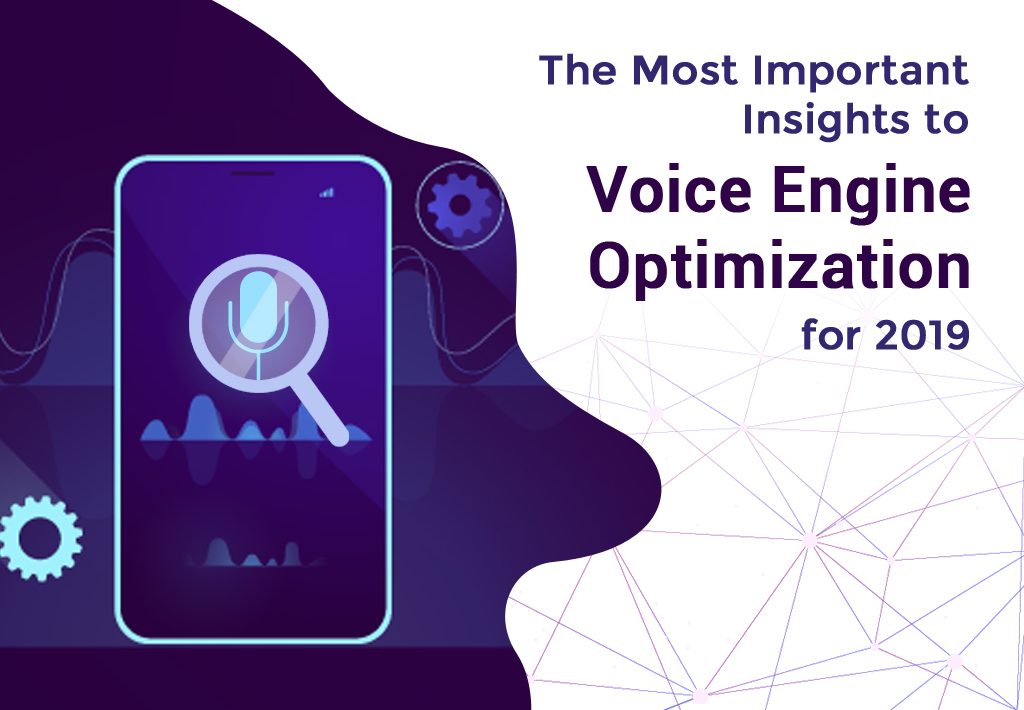The SEO industry has been around for a long time now and it has never stopped evolving.
New, innovative and transformative technology comes by every once in a while, and that shakes the industry to its very core. In the Philippines, there are SEO jobs that focus solely on identifying new trends and technology right before they become mainstream.
This is how important it is to be one step ahead of the curve.
With that being said, a rather intriguing piece of technology that is rising up is the use of Voice recognition as a means to search the Internet.
A few years have already passed since the technology became available, but only recently is it becoming an everyday thing. With the rise of smart devices such as speakers, phones, and tablets, voice technology has become something to look out for in the SEO industry.
In a study facilitated by Bright Local in 2018, they found that 58% of consumers have used voice search to find local business information in the last 12 months. That means more than half of their sample size have had experience with voice search and have used it in such queries.
Another significant finding in the same study states that 76% of smart speaker users perform local searches at least weekly—with 53% of them using the devices to search every day.
It’s also found out that in 2018 alone, there have been over a billion voice searches per month.
Now, pair these with Comscore’s findings which states that 1 in 2 smartphone users use voice technology daily, and you’ll have a tremendous market to work with.
There are already a number of great studies that point to the massive impact that voice search will have in the future, but to the layman, that won’t mean anything. Why do people even use voice search in the first place?
Why Are People Using Voice Search?
It’s been a while since voice technology has come out, and that has led to multiple improvements over time.
Over the years it’s become more versatile and more accurate, and finally, it’s advanced enough to understand a lot of what we want it to find or do for us—particularly to search.
Nowadays, the typical person is almost always on-the-go, so much so that even setting up their laptop for a few minutes can be a hassle. To some, even typing is a rather slow way of searching.
With voice technology, searching becomes as easy as asking a question.
People nowadays want answers and fast—and so far, voice search is what can satiate them.
Voice Technology and SEO
It has already come to the minds of every SEO expert that voice search is not something you should ignore. Rather, it’s an opportunity to make it easier for your consumers to find what they’re looking for.
Yes, there are some differences in how traditional search and voice search is optimized. And in a way, it helps improve both.
Keyword Research
Take into consideration the time and effort it takes to research for specific keywords. You have to make sure it is related to your business, it’s something that regularly ranks in Google, and it has high search volume and relative traffic.
There are many keyword research tools out there to help, but the bottom line is traditional keyword research has no shortcuts.
For voice keyword research, however, there are additional factors to consider.
Keep in mind that the way people speak and how they type are different. They don’t go saying “Useful SEO strategies”. More often than not, they’ll phrase it as a question such as: “What are the most useful SEO strategies”
Either way, the voice assistants in your mobile devices will provide you with a result, but the query in question form will probably provide you with a better answer.
That is why when it comes to voice search, traditional keywords won’t cut it. It’s very important for you to know what kind of questions your audience MIGHT ask—that’s your list of possible keywords.
Again, there are some good keywords research tools to help you out with this. one of the most notable and free ones include Answer the Public and the “People also ask” feature found at the bottom part of Google SERPs.
Keyword stuffing is already considered as bad practice in the SEO industry because it goes against the user-centric ideals of Google themselves. The same goes for voice search.
Interestingly enough, it’s believed that because of voice search, the use of keywords can be detrimental—particularly in the cases wherein it outright disrupts the idea of the content. As long as keywords and keyword phrases are inputted as naturally as possible, this won’t be a problem.
Content Development
when it comes to voice search, there’s not SERP to choose from, normally, the top 10 results are all shown, however, voice search works differently in a sense that it only chooses one to explicitly show or tell you.
Featured snippets are one of the best ways to become prominent in voice search, however, there’s no guaranteed process for your page to be featured, or at least, the guidelines aren’t public.
In Brian Dean’s study, it was said that 40.7% of voice search results came from a featured snippet, in fact, it’s mostly those that are dictated to you directly by your voice assistant.
The most important part of content creation when it comes to voice search is to make it conversational. If your keywords are already questions, then all you have to do is to answer them in your content.
Do so in all types of content that you create. you can integrate it into your version of the buyer’s journey, for example. Asking and answering questions for each phase that they are in.
Another neat tip is to make use of everything you have that is searchable. That means optimizing your business listings, the FAQ section of your page, and of course, every piece of content that you produce.
Be generous with your business information. Put it in your site’s footer for easier access by users. Make sure that basic information such as your name, address, and phone number are accurate.
Many voice searches done are location-based queries, particularly about places near the location of the consumer. This means the more optimize your website for local search results, the more visible you’ll become.
The choice of creating a long form or short content is still being sorted out. And although longer form content is preferred for traditional SEO, VSO can make do with either.
The benefits that come with long-form content is roughly the same with SEO and VSO. The only difference is the addition of specific answers to queries.
Short form content, however, is simple and easy to create. they won’t be much help to normal SEO efforts, but it will have significant influence in voice search based FAQ pages.
The typical structure for short-form content for voice would be a much like a FAQ portion of a webpage. it’s highly preferred that the answers are concise, preferably under 29 words in length as stated in Brian Dean’s aforementioned study.
Another form of media that you should keep an eye on for voice search optimization is video. These tend to show up more for keywords told in a rather natural language. Specifically, for queries where you ask how to do something, more often than not, the video will be the result provided. Keep that in mind for how-to content.
As a side note, voice search is strongly influenced by semantics and everyday language. So it’s highly recommended that your content is easy enough for a 9th grader to be able to understand it perfectly.
Structured Data Optimization
Some SEO experts believe that relevancy is the most important aspect of voice search optimization. As mentioned, only one answer is returned when a voice query is used. That answer is considered to be the best-optimized result.
Technically speaking, the most relevant answer by Google’s algorithms is what will be provided. so the way to become that answer is by optimizing your structured data.
Efforts involved here include ensuring that your pages are easily crawlable and making sure that Google’s bots are able to understand your content. The latter can be done through the use of structured data (schema) markup.
In essence, structured data markup helps you create metadata for your content. This dictates to Google exactly what it is. The more specific your metadata, the more understanding Google has of it.
This is one of the points that doesn’t affect traditional SEO, particularly rankings, and is more in the line of improving the chances that your content will be chosen for voice search results.
Overall, however, the use of structured data is a very good SEO practice as it helps Google show elements of your content in the SERPs.
By being specific with your structured data—such as inputting even the smallest of details like operating hours, contact information, address, and directions, you essentially make it easier for both Google and searchers to identify you.
Going Mobile
Making your website mobile-friendly is already a step towards the right path when it comes to voice search. Keep in mind that most voice searches are done with mobile devices, oftentimes as people are on the go.
This means those using voice search also benefit from the features that mobilization offers websites.
For example, one major aspect of mobile-friendly websites is that they load extremely fast so as to not let the users wait for an extended period of time. people nowadays expect to get quick results and even if a page were to load for a few seconds longer, they’d instantly look for another, faster result.
For further improvements in the speed in which webpages load, AMPs are used—these drastically lessen the load time since it moves away from the software that is used by desktops. Instead, it uses software that is specifically designed to run faster on mobile devices!
What Voice Search Optimization Means to the SEO industry?
At the end of the day, the proliferation of voice search is another step in the evolution of the SEO industry. Though most efforts between traditional SEO and voice search optimization is relatively similar as of the moment, the time will come wherein both of which are two different entities, with different processes of optimization.
For SEO practitioners. Keep in mind that this is not a one-time thing. With ComScore forecasting that 50% of all searches will be done by voice when 2020 comes, it’s now a race to see who can first master voice search optimization.
Key Takeaway
Voice search optimization is unique as it takes a slightly similar stance to traditional SEO but is more natural and easy flowing. When compared to the highly comprehensive, oftentimes overwhelming amount of information that is presented in long-form content by traditional SEO, voice search optimization puts emphasis on directness and accuracy.
For every question, there is a concise, yet appropriate answer—that’s probably the best way of thinking when you discuss voice search. Nowadays, people want answers fast, and they often choose not to go into the nitty-gritty of things. Even people who are just looking for SEO jobs in the Philippines have already taken an interest in the potential that voice search has in the future.
In truth, what truly set voice search rising is the convenience that it provides. Particularly caused by how fast SEO experts were to adapt to the rise of technology.
Loads of content were updated to become voice-searchable. Content creation tactics were made just for voice-search, and all other SEO factors were adjusted and implemented quickly.
It may not be the most prominent way of searching for queries as of the moment, but soon enough, when technology advances once again to make voice search more convenient, more accurate, more understanding, more humane, then it will definitely be the next step in the evolution of search engine optimization.











